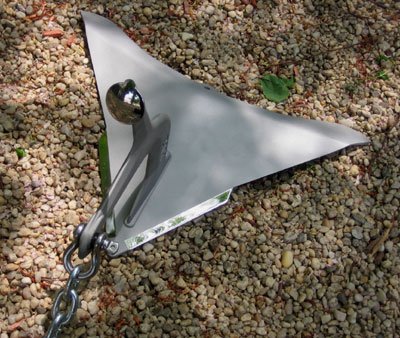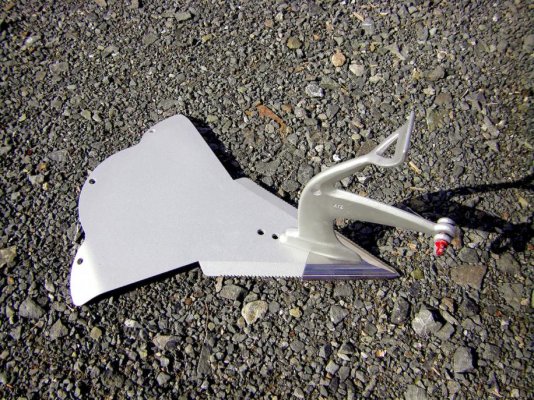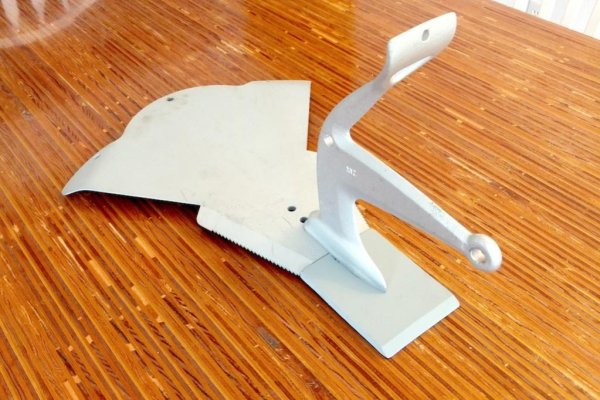Nomad Willy
Guru
As a design I like the Spade anchor a lot.
The shank is very light and strong (tubular) welded up fabrication. Knife like leading edge on the shank and ideally shaped concave fluke. Requires ballast though and in the anchor tests I've read the aluminum Spade has done poorly (on a relative basis) so I'd be inclined to get a smaller steel Spade of the same weight. But surface area is very important in mud. I was glad to hear of someone (eyshulman) halving good luck w a Spade. Was hot to get one in the past. There was an anchor test that was conducted in mud only and the old XYZ won that one. At 13lbs it out shone all others.
In the anchor test The top performing anchors were
3-1 Scope;
1. XYZ
2. Hydro Bubble
3. Kingston Plow
4. Davis Talon XT
5. Bulwagga
6. Super Max
7. SARCA
7-1 Scope;
1. SARCA
2. XYZ
3. Super Max
4. Bulwagga
5. Hydro Bubble
6. Bulwagga
7. Fortress
At 7-1 scope all the anchors had 450 to 500lbs of resistance.
At 3-1 scope The Fortress, Danforth Deep Set II, Super Max, Rocna and Spade Alum failed to hold at or above the the 400lb level. At 3-1 scope only one anchor did more poorly than the Rocna.
It's interesting how some shine and fade at different scopes. Of course the best anchor is one that works well at both short and long scopes. So anchors on both lists is a good thing .. like the SARCA, XYZ, Bulwagga and Hydro Bubble. Notice the Plow did well at short scope relative to these other anchors (and a few others that wern't top performers). I know where there is a big Hydro Bubble cheap. And a 13lb XYZ that I know holds very well but only sets in mud.
Attached Files
 PracticalSailor-April06 copy 2.pdf (698.2 KB, 5 views)
PracticalSailor-April06 copy 2.pdf (698.2 KB, 5 views)
The shank is very light and strong (tubular) welded up fabrication. Knife like leading edge on the shank and ideally shaped concave fluke. Requires ballast though and in the anchor tests I've read the aluminum Spade has done poorly (on a relative basis) so I'd be inclined to get a smaller steel Spade of the same weight. But surface area is very important in mud. I was glad to hear of someone (eyshulman) halving good luck w a Spade. Was hot to get one in the past. There was an anchor test that was conducted in mud only and the old XYZ won that one. At 13lbs it out shone all others.
In the anchor test The top performing anchors were
3-1 Scope;
1. XYZ
2. Hydro Bubble
3. Kingston Plow
4. Davis Talon XT
5. Bulwagga
6. Super Max
7. SARCA
7-1 Scope;
1. SARCA
2. XYZ
3. Super Max
4. Bulwagga
5. Hydro Bubble
6. Bulwagga
7. Fortress
At 7-1 scope all the anchors had 450 to 500lbs of resistance.
At 3-1 scope The Fortress, Danforth Deep Set II, Super Max, Rocna and Spade Alum failed to hold at or above the the 400lb level. At 3-1 scope only one anchor did more poorly than the Rocna.
It's interesting how some shine and fade at different scopes. Of course the best anchor is one that works well at both short and long scopes. So anchors on both lists is a good thing .. like the SARCA, XYZ, Bulwagga and Hydro Bubble. Notice the Plow did well at short scope relative to these other anchors (and a few others that wern't top performers). I know where there is a big Hydro Bubble cheap. And a 13lb XYZ that I know holds very well but only sets in mud.
Attached Files









